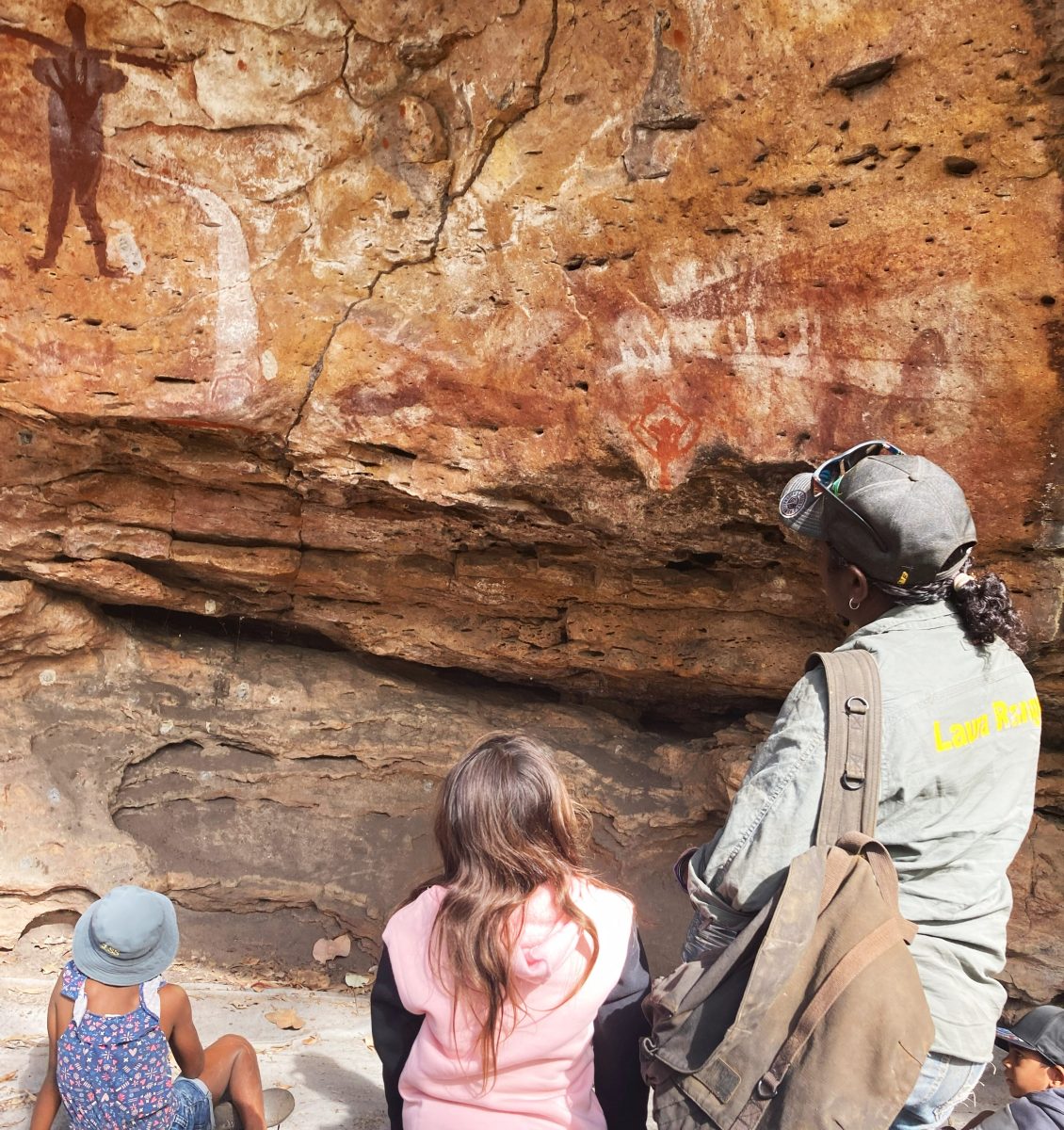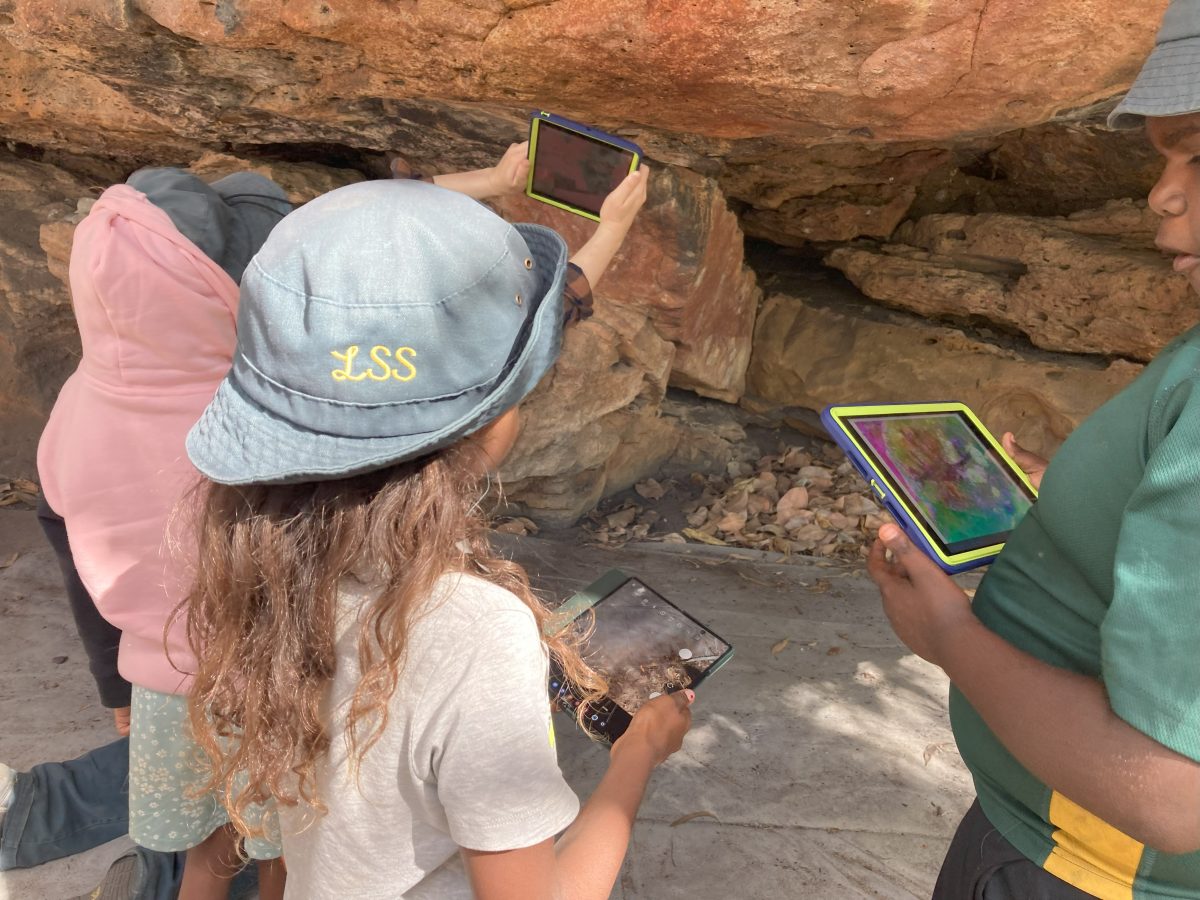
Laura Ranger Ellenore Lowdown looking at rock art motifs with students from Laura State School. Photo: Fiona McKeague, Griffith University
Although rock art and rock bands don’t have much in common, international music sensation Pearl Jam is backing a new artificial intelligence and digital literacy pilot program that will help Laura children preserve their region’s famous art.
Pearl Jam’s Vitalogy Foundation has poured $60,000 into the Griffith University project which will accelerate digital literacy for Laura State School students and use AI to identify and preserve Laura rock art and develop educational resources.
Project lead professor Lynley Wallis said there were thousands of rock art shelters throughout Cape York, most of which included amazing rock art.
“Using AI to help catalogue the rock art images will help streamline documentation of the art, allowing more sites to be recorded,” she said.
“While the project is underpinned by the need to protect the rock art in the future, it also aspires to connecting that heritage with the local community.”
To do this, Griffith’s researchers are developing resources that will provide an understanding of how communities, researchers and schools can successfully collaborate.
These teaching modules and other tools are being piloted at Laura and researchers hope they will eventually be included in the Australian curriculum.
“The idea of using machine learning and AI on country and connected to ancient sandstone rock art sites is an innovative way to expose Indigenous kids to opportunities they wouldn’t necessarily get,” said senior researcher Dr Troy Meston.
“This curriculum provides for culturally relevant information and the contributions of other Indigenous scholars throughout and is particularly significant within remote Indigenous communities where Indigenous students don’t always have easy access to digital technologies.”

Laura State School students with principal Melissa Shepherd and Laura Rangers Sue Marsh, Ellenore Lowdown, Beth Doughboy and Cliff Callaghan during a rock art excursion. Photo: Fiona McKeague, Griffith University
Laura State School principal Melissa Shepherd said it was important for her students to have regular exposure both to their culture and to digital technologies.
“The children love engaging with their culture and we must continue to engage our students with cultural activities to continue their excitement for learning and show them what’s possible,” she said.
“This has been an amazing, positive journey and the students have learned so much about culture, technology and about collaborating with the wider community including Indigenous Elders and Laura Rangers.”
Laura Rangers have worked for over a decade to document rock art sites in Quinkan Country, which was added to the National Heritage List in 2018.
Laura Ranger Coordinator Sue Marsh said the area’s distinctive art style included tall slender Timaras and fat bodied Imjims, two spirit beings, and dated back thousands of years.
“Quinkan Country has an estimated 10,000 rock art sites depicting a rich cultural history,” Ms Marsh said.
“Traditional Owners want to protect the area from mining interests and develop an eco-tourism industry, which will strengthen the local economy and maintain the connection between country, people and story.”

Students from Laura State School capturing and analysing rock art motifs using apps on tablets. Photo: Fiona McKeague, Griffith University


